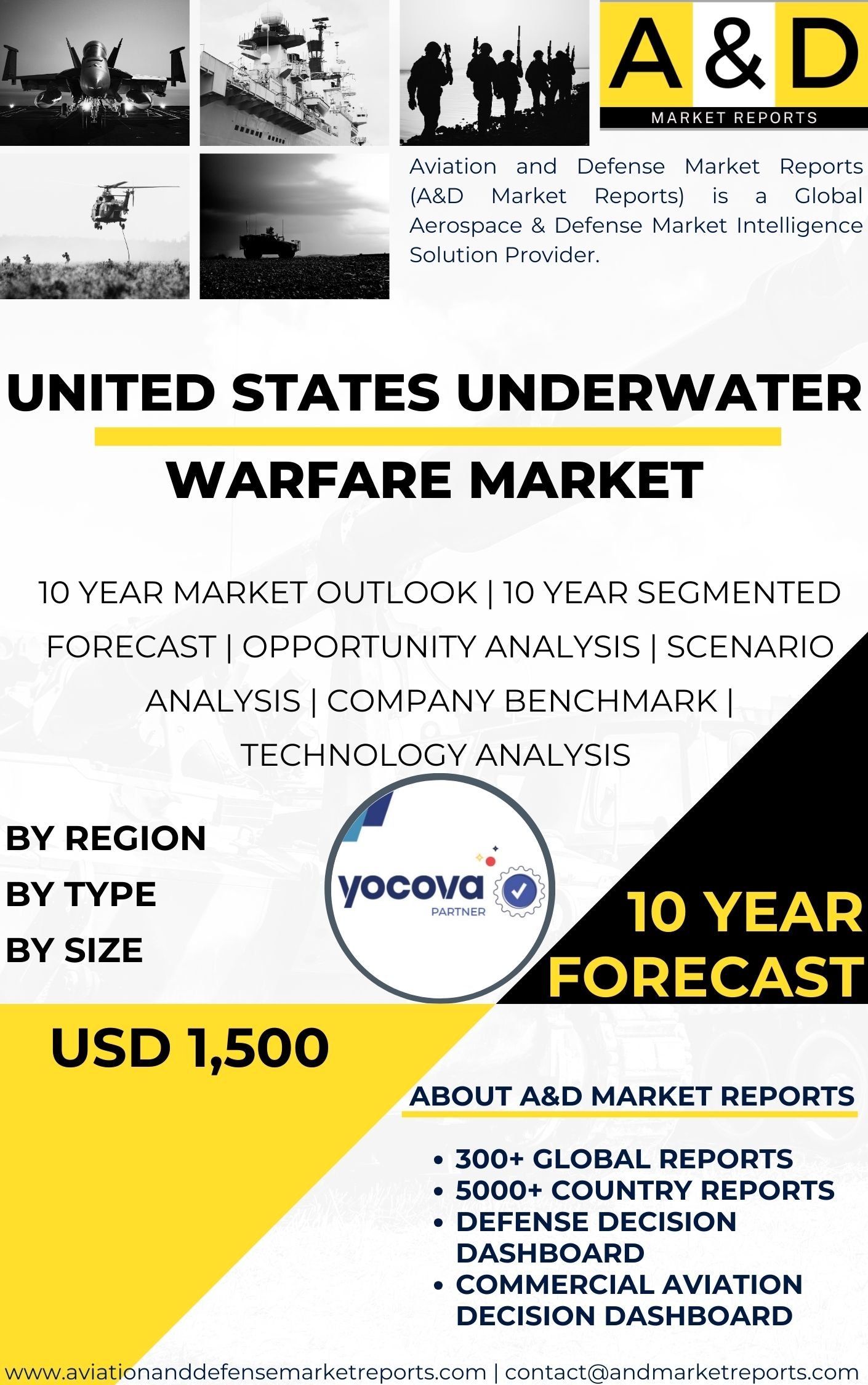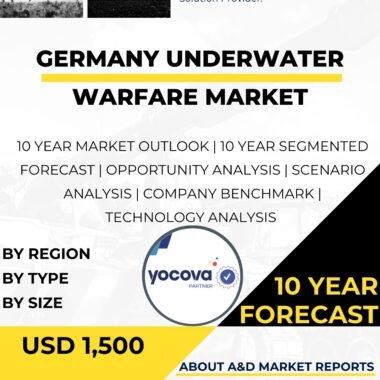Description
The United States plays a pivotal role in the global underwater warfare market, driving innovation and shaping the dynamics of naval warfare technology worldwide. Underwater warfare encompasses a range of capabilities and technologies designed to operate beneath the sea, primarily within the domains of anti-submarine warfare (ASW), mine countermeasures (MCM), and naval intelligence, surveillance, and reconnaissance (ISR). With its vast naval assets, research and development capabilities, and commitment to maritime security, the United States influences and advances the global underwater warfare market in numerous ways.
One of the key drivers of the U.S. influence in this market is its commitment to maintaining a robust and technologically advanced submarine fleet. The United States Navy operates one of the world’s most extensive submarine fleets, comprising both nuclear-powered attack submarines (SSNs) and ballistic missile submarines (SSBNs). These submarines serve as a powerful deterrent and strategic force, requiring continuous technological advancements in stealth, propulsion, and weapon systems. The United States invests heavily in the development of next-generation submarine technologies, influencing the global underwater warfare market by setting high standards for performance and capability.
Furthermore, the United States actively collaborates with its allies and partners in sharing submarine technology and expertise. Programs like the Foreign Military Sales (FMS) enable the U.S. to export submarine technology to allied nations, fostering cooperation and interoperability in underwater warfare capabilities. This sharing of knowledge contributes to the global spread of advanced submarine technologies, solidifying the United States’ position as a key player in the market.
The U.S. Navy’s commitment to ASW is another crucial factor influencing the global underwater warfare market. ASW involves detecting, tracking, and countering enemy submarines and underwater threats. The United States invests in advanced ASW technologies, including sonar systems, sensors, torpedoes, and anti-submarine aircraft. These innovations not only enhance the capabilities of the U.S. Navy but also set benchmarks for other naval forces worldwide, driving demand for ASW solutions in the global market.
The United States also contributes significantly to the development of mine countermeasures (MCM) technologies. Naval mines pose a significant threat to maritime security, and the U.S. Navy invests in cutting-edge MCM systems, such as remotely operated vehicles (ROVs) and autonomous underwater vehicles (AUVs), to detect and neutralize these threats. The expertise and technological advancements in MCM systems generated by the United States have a ripple effect on the global underwater warfare market, influencing the adoption of similar systems by other naval forces.
Additionally, the United States leads in the field of naval intelligence, surveillance, and reconnaissance (ISR) capabilities. These technologies involve the collection, analysis, and dissemination of information related to underwater activities and threats. The United States deploys advanced ISR assets, including unmanned underwater vehicles (UUVs), to gather critical intelligence in various maritime environments. Its leadership in this domain not only enhances its own naval operations but also fosters demand for ISR solutions globally, as other nations seek to bolster their maritime security capabilities.
In conclusion, the United States plays a central role in shaping the global underwater warfare market through its commitment to technological advancement, cooperation with allies, and leadership in critical domains such as submarine operations, ASW, MCM, and naval ISR. With its vast naval fleet, research and development capabilities, and a commitment to maritime security, the United States influences the trajectory of underwater warfare technology and capabilities worldwide. As maritime threats continue to evolve, the U.S. Navy’s leadership and investments in underwater warfare ensure that it remains at the forefront of global efforts to maintain maritime security and deter potential adversaries.




